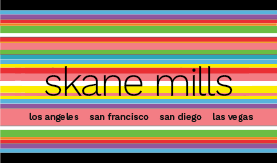Skane Mills routinely defends products liability matters presenting theories of strict liability, negligence, express warranty, implied warranty and warranties of fitness for intended purpose and merchantability. Products involved in past and present litigation have included adhesives, floor fill manufacturers, electrical components, appliances, windows, mountain bikes, motocross bikes, alarm devices, construction tools and equipment, skateboards, pogo sticks and exercise equipment.
In a product liability action, the plaintiff purchased a beverage supplied by our client and sold at a fast food store operated by a franchisee (a co-defendant). The plaintiff alleged he disclosed that he had a nut allergy to the franchisee’s employee but was nevertheless served a drink containing a nut-based ingredient. After consuming the beverage, the plaintiff immediately was hospitalized for anaphylactic shock which resulted in a settlement demand of over $300,000. We were able to successfully persuade co-defendant’s insurer to defendant and indemnify our client, and obtain a dismissal for our client from the plaintiff’s complaint on the eve of trial.
We represented a large appliance manufacturer in a subrogation case, wherein the plaintiff sought reimbursement for over $60,000 of property damage due to an allegedly defective component part in a refrigerator. The plaintiff claimed there was a defect in a water dispenser valve contained within the refrigerator. We were able to prove there was no defect in the valve, for which the plaintiff agreed to dismiss our client with prejudice in exchange for a waiver of costs.
We represented a bicycle manufacturer whose component part was alleged to have broken when a foreign object became lodged in the spokes of the bicycle wheel, causing permanent injury to the rider and loss of past and future wages. We were able to show that the plaintiff had pre-existing injuries and to cast doubt on the plaintiff’s theory regarding how the accident occurred. This allowed us to settle the case for our client for approximately $100,000 (with only $40,000 being paid by our client) even though a plaintiff in a similar case, with no loss of wage claims, had recently been awarded $720,000 by a California jury.
We obtained a defense verdict for our client, the designer of a seat that attaches to motorcycle rear-fenders. The plaintiff sued our client under claims of subrogation, indemnity and contribution stemming from plaintiff’s own underlying personal injury case against the motorcycle owner and driver. In the underlying case, plaintiff settled with these defendants for an assignment of subrogation rights. Throughout the action, we maintained our position that plaintiff’s entire action was barred by the applicable statute of limitations as plaintiff was assigned only a subrogation claim with an underlying products liability claim (held by the owner and driver of the motorcycle). The trial court rejected plaintiff’s arguments that the assignment was broadly drafted to include claims within the applicable statute of limitations, such as indemnity and contribution. The court further held that even if plaintiff’s action survived the statute of limitations defense, her subrogation claim failed because there was no evidence that our client’s product was defective in any way or contributed to plaintiff’s alleged injuries. The court astutely found that plaintiff fell off the back of the motorcycle because she was not paying attention, not because of anything regarding the seat. We were also able to successfully show the court that plaintiff’s expert was unqualified to render his opinions at trial.
In a products liability action involving allegedly faulty plumbing fittings, our attorneys defended one of the product-wholesalers in Nevada’s largest class-action lawsuit in history. The class-plaintiffs, numerous Nevada homeowners, alleged the defective plumbing fittings were of an improper metal that would prematurely fail through corrosion, causing damage to their homes. The manufacturer filed a third-party complaint against the developers and other parties. Through discovery, our attorneys determined the client was not significantly involved in the stream of commerce of the product, thus limiting any possible liability. We conducted discussions with the product’s manufacturer, and arrived at an extremely favorable settlement for the client, thus removing the client from any further exposure through the settlement between the manufacturer and plaintiffs.
